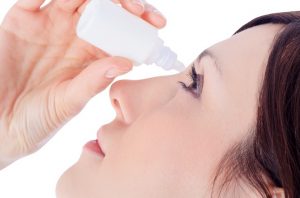
There are several factors that contribute to the development of dry eye. Post-menopausal women are more at risk, as well as people who live in major cities with high levels of air pollution.
Cooler conditions and higher elevations can also have a significant impact on dry eye. According to the Environmental Factors and Dry Eye Syndrome study, risk for dry eye is 13 percent higher in areas of higher altitude. This makes sense, as arid weather conditions and wind can rob the eyes of moisture. However, anyone can get dry eye, regardless of latitude or elevation.
Some people can experience seasonal dry eye during fall and winter months. If you find that your eyes feel scratchy, irritated or burning when the weather turns cold, you are certainly not alone. Here are some ways to help prevent winter dry eye from affecting your vision.
- Wear sunglasses. Sunglasses create a barrier between your eyes and the outdoor elements. If you are going to be outside on a windy day, wear a pair of wraparound sunglasses to keep the wind from blowing directly into your eyes.
- Use a humidifier. When you turn on your home furnace, the humidity level of the air inside your home drops. Turn on a humidifier during winter months to add moisture back into the air.
- Eat foods high in omega-3 fatty acids. Some people find that eating foods with omega-3 fatty acids can help reduce symptoms of dry eye. Mackerel, salmon, oysters, sardines, flax seed, walnuts and soybeans are a few foods that contain high amounts of omega-3s. You can also try an omega-3 supplement.
- Keep artificial tears handy. Rewetting drops or lubricating drops can offer temporary relief when your eyes feel dry and gritty. Lubricating drops may make your vision blurry for a short time, so use thinner drops when reading or doing other activities and use the thicker, more blurring drops before bedtime.
- Get a comprehensive eye exam. Talk to your eye doctor about your dry eye symptoms at your next eye exam. A thorough exam is the best way to protect your vision, prevent eye disease and treat chronic conditions like dry eye (Source: AAOA).